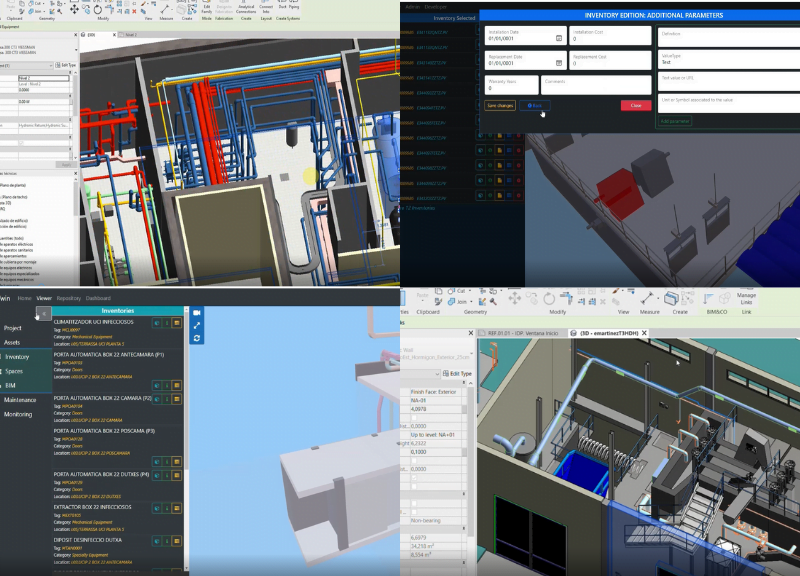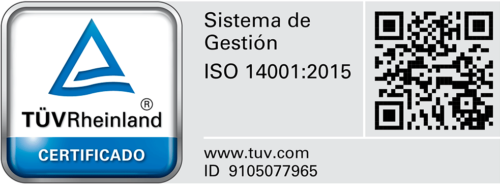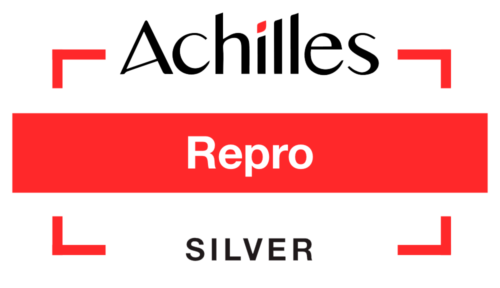Using the Digital Twin to drive sustainability


Almost half a century has passed since the first United Nations Conference on the Human Environment was held in Stockholm (Sweden) in 1972, where the UN Intergovernmental Panel on Climate Change (IPCC) was set up in 1988 and the United Nations Framework Convention on Climate Change (UNFCCC) was created in 1992, with the aim of stabilising the growing emissions of polluting gases into the atmosphere.
The biggest summit of all (26 to date) was the Paris summit (COP21) in 2015. The community pledged to initiate a path of emission reductions to bring the global temperature increase by the end of the century to an average value of 2ºC and with the aspiration of limiting it to 1.5ºC.
In November 2021, at COP26 in Glasgow, the signatory countries reaffirmed the emergency situation and the objectives of the Paris summit. In addition, agreements were adopted on:
- Carbon dioxide emissions must be reduced by 45% in this decade in order to achieve net zero emissions by mid-century (2050, net zero emissions).
- Fossil fuel phase-out (decarbonisation of the economy).
- Climate action finance for developing countries USD 100 billion per year.
The current situation is such that it is imperative and urgent to intervene diligently on different axes, bringing sustainability to different business axes, and addressing the urgent aspects that contribute to the carbon footprint of these businesses:
- Real estate consumes 40% of energy and is responsible for 38% of the world’s CO₂ emissions.
- Buildings are the main consumers of energy and generators of emissions, with 75% of the building stock being energy inefficient.
- The industrial sector in Spain is responsible for 37% of total energy consumption. Industrial emissions account for 30% of global GHG emissions.
- 66% of total emissions in 2019 and 2020 globally come from power generation (+40%) and transport as a whole (+20%).
- By 2030 €3.6 billion is planned to be invested in clean energy infrastructure and projects to take the world to Net Zero 2050, and around €360 million per year on average during 2021-2023 in clean energy investment and sustainable recovery.
- Global CO2 emissions rose by 4% in 2021 as demands for coal, oil and gas recovered with the economy.
- 90% of the world’s population in 2021 breathes polluted air causing more than 5 million premature deaths per year.
The Spanish government, aware of these challenges, has launched the National Integrated Energy and Climate Plan (PNIEC). The PNIEC aims to reduce greenhouse gas emissions by 23% compared to 1990. It involves the mobilisation of 241.4 billion euros between 2021 and 2030, which will be allocated mainly to boosting renewables, savings and efficiency measures, and electrification and networks. Eighty per cent of these investments will be made by the private sector. The remaining 20% will be investments by the different public administrations.
Various studies by entities of recognised prestige point out the keys to sustainability and climate balance. Specifically:
- According to Gartner, the main trend in the industry is the Optimisation of the efficiency of the current business, and for this the essential measure used is the Digital Twin.
- 17% of maintenance managers are already using some state-of-the-art technology for predictive maintenance and another 47% will be using it in the next 3 years to reach 64% by 2023.
- 20% of executives conclude that productivity management is their main challenge in today’s environment (2021). 24% of CIOs believe that Digital Twins will be the most important technology in which their company will invest in 2021.
- 32% of Spanish industrial companies are in an advanced state of digitisation.
- 76% of executives intend to increase their investments in digitisation and implement more Industry 4.0 technologies.
- 87% of Spanish industrial executives believe that the Digital Twin and real-time data management are the essential technology components enabling industrial digitisation.
- 53% of Spanish companies claim to have initiated robotic automation processes by 2021 and by 2023 this number is expected to rise to 73%.
- 75% of the building stock in Spain is energy inefficient. The different types of buildings in Spain are the main consumers of energy (+40%) and generators of emissions (+38%).
At IDP we are firmly committed to sustainability, energy efficiency and the rational use of energy. As a leading company in the digitisation of assets, with more than 200 Digital Twins implemented, we have the necessary experience to optimise the management of the most polluting and least efficient assets. Thus, our Digital Twin focuses on optimisation along the following axes:
- Increased information management integrated in one platform.
- Real-time field operational information.
- Operational and management dashboards.
- Proactive maintenance of critical infrastructures.
- Monitoring of signals and devices.
- Increasing the useful life of assets.
- Anticipation of critical situations.
- Reduction of maintenance and operating costs.
- Adequate consumption management.
- Control of carbon emissions.
- Minimising the use of energy.
The methodology used by IDP is based on the following steps:
- Digital transformation consultancy.
- Digitalisation of assets.
- Implementation of the digital twins of the assets.
- Maintenance and operation of the twins, pursuing those target needs such as analytics, prediction or simulation, and always updating the information.









